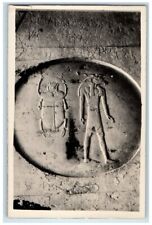
The hunt for extraterrestrial life has just advanced to a new level with a powerful new optical telescope seeing first light. The high-tech telescope, located at the Oak Ridge Observatory in Massachusetts, was backed by The Planetary Society and built by Harvard physicist Paul Horowitz and his team. The telescope was built for one purpose and one purpose only, to scan the heavens in search of light signals emitted from alien civilizations as part of a new SETI (Search for Extra-Terrestrial Intelligence) initiative.
Housed beneath a retractable roof situated high atop a wooded ridge in Harvard, the telescope isn’t what most people would expect when they visualize a powerful optical telescope. But what may look like a mish-mash of metal bars and mirrors to the uninitiated represents a truly ambitious project that would make Planetary Society founders Bruce Murray, Carl Sagan, and Louis Friedman, Executive Director of the Planetary Society, extremely proud.
The three founders were dumbfounded in the 80s by the US government’s moves to scale down planetary exploration. However, it was this recalcitrance that led to the formation of The Planetary Society in 1989.
The telescope has some impressive computer muscle behind it, with the developers claiming that it can process the equivalent of all books in print in a second. Its optical detectors are cutting edge as well, with a sensitivity that can detect a billionth-of-a-second flash of light. The formidable technology driving it should allow the new telescope to scan the entire northern hemisphere sky over the course of a year.
The Planetary Society says that the observatory represents the biggest SETI project it has ever sponsored, and, considering the number of large-scale SETI projects commissioned so far, that’s saying a lot. Some of the major projects sponsored to date include radio SETI projects such as BETA, SERENDIP, and the popular SETI@home. But despite many years of scanning the skies for radio signals, there has been little in the way of any definitive ET activity, hence the Society’s interest in the visible spectrum. “We have been listening for alien signals for decades,” said Friedman, “it’s time we started to watch for signals as well.”
It is now common among SETI advocates to argue that alien civilizations are just as likely to communicate with light signals as they are with radio waves, and not without good reason, as there are a number of advantages to using light as a form of interstellar communication. Unlike radio waves, a laser-like beam suffers little interference as it travels through space, not to mention the vast amount of data that can be transmitted using such a beam. Additionally, a laser’s unidirectional quality coupled with its brightness – capable of reaching intensities 10 times greater than the sun – make it easier for receivers to both see and track the beam to its source. And aside from the initial outlay, the optical SETI project is simpler, cheaper and will cost far less to maintain than its radio counterparts.
But one of the project’s major strengths is also one of its biggest weaknesses, because unless an extraterrestrial beam is pointed our way it is unlikely that it will be detected. But despite this limitation, the Society are happy that they are now covering yet another possible avenue of communication in their search for alien civilizations.


















Comments are closed.